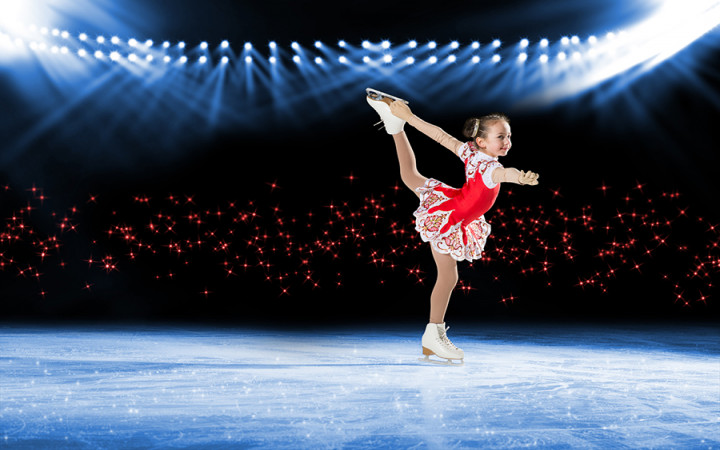Today’s Wonder of the Day was inspired by Sofia from Burlington, VT. Sofia Wonders, “Why do figure skaters spin faster with their arms in?” Thanks for WONDERing with us, Sofia!
What's your favorite winter sport? Some kids love to watch football games when it gets cold. Others might prefer ice hockey. For some people, though, nothing can top the speed and artistry of figure skating.
When professional figure skaters hit the ice, something magical occurs. A well-executed routine resembles an intricate dance played out across the ice. The "oohs" and "ahhs" of the crowd follow every jump and spin.
One of our favorite moves is when a figure skater jumps high into the air and, upon landing, immediately goes into a rapid spin. The skater may nearly sit on the ice before standing and pulling her arms in toward her body, her spin until she's just a blur.
Although it seems like figure skaters defy the laws of physics, it's actually those laws that explain how they're able to accomplish what we see on the ice. In particular, when it comes to spinning, we must understand the principle of the conservation of momentum.
Figure skaters are able to skate so quickly because the icy surface below their skates offers very little friction to slow them down once they're in motion. When a skater skates in a straight line, linear momentum is the product of the skater's mass and velocity.
When spinning, however, linear momentum changes to angular momentum. Angular momentum depends upon angular velocity and moment of inertia.
Angular velocity is a measure of how quickly an object is spinning. Moment of inertia depends upon the mass of an object and how far the mass extends from the axis of motion.
The principle of the conservation of angular momentum holds that an object's angular momentum will stay the same unless acted upon by an outside force. This explains why a figure skater spins faster when she tucks her arms in close to her body.
When she begins spinning with her arms away from her body, she has a large moment of inertia because more of her mass is farther away from her axis of movement (her body). When she tucks her arms in close to her body, her moment of inertia decreases.
If angular momentum must stay the same, then simple mathematics gives us our answer. With angular momentum constant, angular velocity must increase as moment of inertia decreases. If she extends her arms again, her moment of inertia will increase and the speed of her spin will decrease again.
If you've ever watched figure skaters spinning on the ice, you may have WONDERed why they don't get dizzy. In reality, they often do get dizzy and only years of training allow them to overcome dizziness to perform multiple revolutions per spin.
Sometimes skaters use simple tricks to try to reduce dizziness. For example, some skaters stare at a fixed point at the end of a spin to help their brains refocus more quickly. Other might add small dance moves to the beginning and end of spins to hide any balance problems they might encounter due to dizziness.




